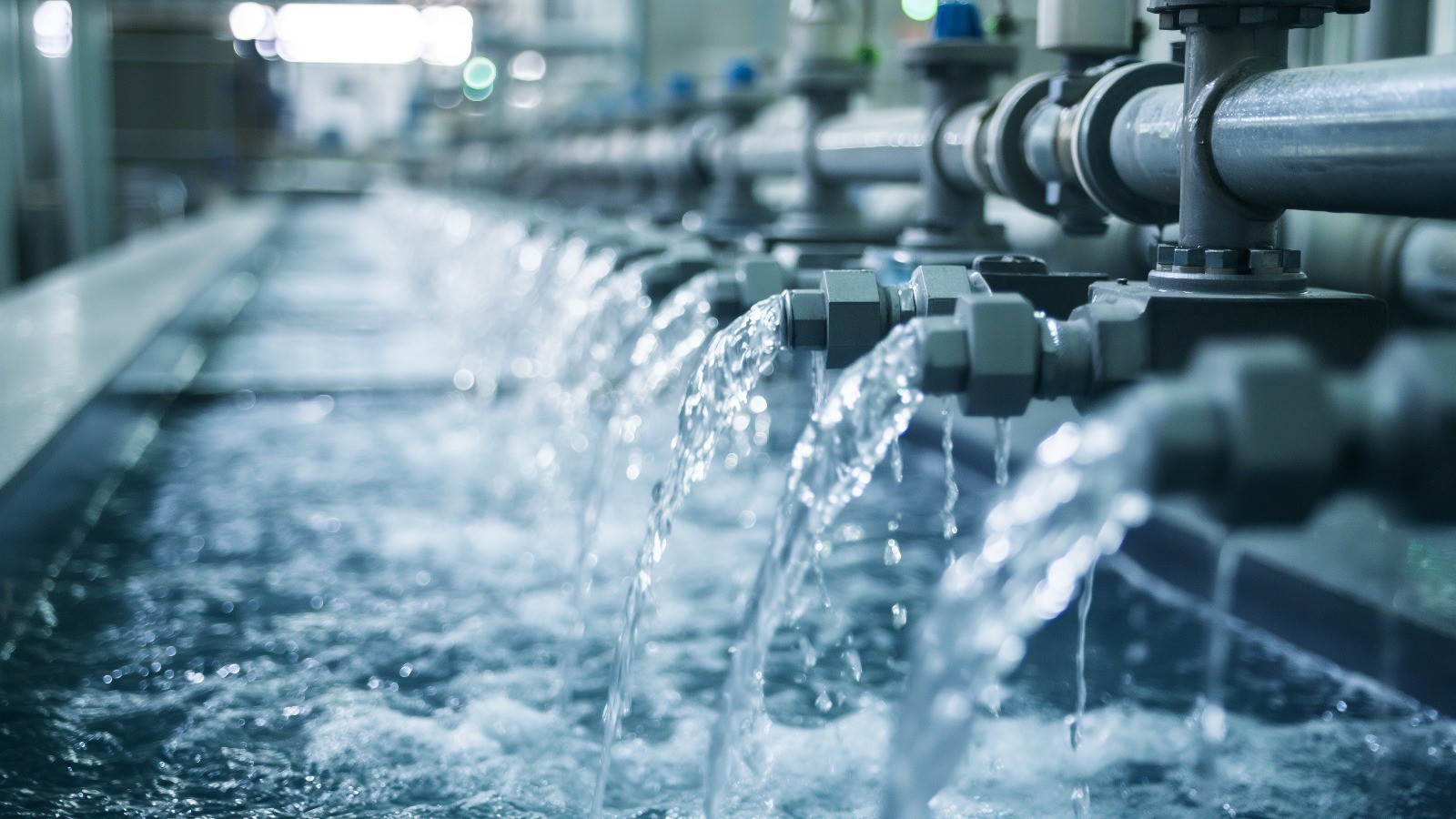It’s a worldwide issue: Everywhere you look, local water demand often exceeds available resources. According to the European Environment Agency (EEA, 2021), 20% of Europe faces water stress every year.
Main driving factors

In Belgium, this issue is particularly critical. While the frequent rainfall may give an impression of abundance, the reality is that a significant portion of the population and territory face water scarcity. In fact, Belgium is ranked 23rd out of 164 countries for water stress, according to the World Resources Institute (WRI, 2019).
Water footprint & water scarcity
- Belgium
- Europe
Belgium
Freshwater availability is lower in Belgium than in neighbouring countries
Water footprint is higher than the EU average of 4,992 litres per day per capita and places it 10th out of all EU countries
Ranks 3rd highest water-stressed country in EU
Ranks 23rd out of 164 countries in terms of water stress gobally
West Flanders is the most affected region
- Just over half of the net water use is accounted for the energy sector and industry
Europe
- 38% of the EU population was affected by water scarcity in 2019
- 29% of the EU territory was effected by water scarcity in 2019
- 2 to 9 billions euros cost of droughts each year
The pharmaceutical sector is acutely aware of this challenge. The sector is heavily reliant on water availability and its significant potential to impact water resources. To fully grasp the current state of water management within the industry and assess its position, it is essential to provide a clear overview of the sector and anticipate and address future challenges related to both water quality and quantity.
Water shortage impact on the pharmaceutical industry
Now more than ever, there is a pressing need to balance sustainability with operational excellence. Water is a critical resource for the pharmaceutical industry, playing a crucial role across every stage of the value chain, particularly in manufacturing, R&D and formulation processes.
Leading pharmaceutical companies are increasingly prioritising water sustainability in response to the growing threat of global water scarcity. Over 80% of the top 30 global pharmaceutical companies recognise water management as a critical step toward sustainability and conduct regular water risk assessments. Nearly all of these companies identify the formulation and production stage as the primary focus for water conservation, with 93% concentrating their efforts in this area. Furthermore, half of the top pharmaceutical companies highlight significant opportunities to reduce wastewater creation in API manufacturing.
80% of the top 30 global pharmaceutical companies list water as one of their top sustainability focus areas

Value chain indicating where the top 30 global pharmaceutical companies (percentage) have publicly indicated where they are taking water-related actions1
While many pharmaceutical companies acknowledge water challenges and actively collaborate with their suppliers, they often encounter difficulties in implementing comprehensive actions across the entire supply chain. These challenges include:
Water Risk Assessments: Conducting thorough evaluations of water-related risks at every stage of the supply chain.
Supplier Engagement: Actively working with suppliers to address water challenges and ensure they adopt sustainable water management practices.
Reporting Requirements: Establishing robust sustainability reporting frameworks to track, document, and communicate key environmental and resource management metrics.
Sustainability Practices: Embedding sustainable water management practices throughout all aspects of supply chain operations.
Resource Conservation: Developing strategies to conserve and reuse water without compromising manufacturing standards and product quality.
Regulatory Compliance: Ensuring water management practices comply with or exceed regulatory requirements to uphold product efficacy and safety.
As the urgency for sustainability grows, conserving resources while upholding high manufacturing standards has become a top priority. Water plays an indispensable role in various critical functions, such as maintaining product sterility, cooling systems to ensure optimal temperatures, and serving as a solvent in drug formulation. Any compromise in water quality or availability can directly impact product efficacy, safety, and regulatory compliance.
Understanding the waste hierarchy for sustainable water management system
Developing resilient, future-proof business models that align with critical sustainability criteria is paramount, with a particular focus on sustainable water management and wastewater practices. This requires a clear and comprehensive approach to evaluating the entire water management framework, identifying opportunities for immediate improvements while fostering long-term value creation.
Sustainable water management is not just about reducing consumption—it's about maximising efficiency and minimising waste. For companies striving to meet sustainability commitments, wastewater reuse and recycling are critical areas of focus that must be addressed across the entire value chain. In this context, the “Waste Hierarchy’ provides a guiding framework for water management, emphasising waste prevention as a primary goal, followed by reuse, recycling and responsible disposal.
Make your water strategy a reality

Develop wastewater treatment to achieve desired water quality
By adopting and implementing advanced water treatment and recycling technologies, the pharmaceutical industry can effectively manage wastewater, turning a potential liability into a resource. This approach supports a circular economy without compromising on product quality, as the treated water in production processes meets the highest quality standards.
Manufacturing processes in the pharmaceutical industry require water that complies with stringent regulatory standards, such as GAMP, cGMP, ISPE and FDA guidelines, including USP and Ph. Eur. Achieving this level of water quality poses significant challenges, as the water often needs to exceed the quality of city tap water. This calls for a highly reliable treatment system and robust sampling strategies to ensure quality consistency.
Pharmaceutical wastewater contains a complex mix of organic compounds, solvents, and APIs, with compositions that can vary significantly. This complexity makes treatment and recycling efforts particularly challenging and resource-intensive.
The wastewater treatment cycle is a critical process encompassing the collection, treatment and management of water after its use in industrial activities:
Collection: Wastewater is gathered from various sources into centralised collector pits, often converging in a common basin.
Preliminary treatment: Larger solids are removed through processes such as sedimentation. pH neutralisation is conducted to prepare the water for more intensive treatment.
Treatment: The wastewater enters the wastewater treatment plant (WWTP) and undergoes advanced purification methods such as ultrafiltration, reverse osmosis, UV light, chlorine and biological processes.
Distribution: The treated water is stored in a secured basin and distributed through validated piping systems to various facility points, ensuring maintained quality and preventing cross-contamination.
Continuous monitoring and usage: Treated wastewater can be reused within the facility to reduce dependence on city tap water, provided it undergoes stringent monitoring to meet required quality standards. This necessitates a robust sampling strategy and a comprehensive maintenance and monitoring framework to demonstrate system reliability and effectiveness.

Leveraging expertise for tailored solutions
To tackle the interconnected challenges of water management, it is essential to develop and implement comprehensive strategies. This involves setting clear, actionable targets during the creation of a roadmap that outlines concrete improvement initiatives. These initiatives must be supported by a robust governance framework to ensure effective implementation and long-term success.
PwC leverages its global expertise through the Water Centre of Excellence, a hub that unites knowledge and experience from addressing water challenges across various sectors and regions worldwide. Our multidisciplinary team, including water policy experts, hydrologists, environmental economists, engineers, and sustainability specialists, collaborates to provide tailored solutions to your water-related challenges.
1 WWF and AstraZeneca. Diagnosing Current and Future Water Risks Facing the Pharmaceutical Sector. WWF Germany and WWF Sweden, November 2021.
Author
Contact us












